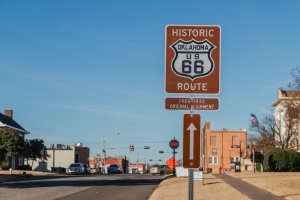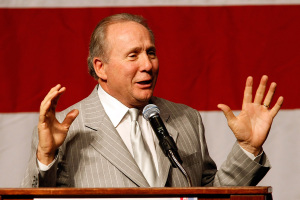Indigenization
Calling for Contextualization, Part 5
If there were such a thing as a Hall of Fame for '80s movies, Back to the Future would have to be there. Michael J. Fox is in his heyday, wearing his iconic red, puffy vest, riding his skateboard through town, carrying the role of Marty McFly beautifully. In one of the film's most memorable scenes, Marty is playing electric guitar at his parent's 1955 "Enchantment Under the Sea" dance. What starts as a crowd-pleasing, "Johnny B. Goode," ends in a confusing climax when Marty rips into an intense guitar solo straight from 1985. The 1955 crowd just can't relate to the music of the 80's, and Marty awkwardly leaves the stage.
In a very small (and humorous) way, the "Enchantment Under the Sea" scene exemplifies the challenge of creating an indigenous expression in a foreign environment - sometimes our expressions just don't fit.
It's more commonly a challenge in a cross-cultural context, but it can be a challenge anywhere that we are seeking to faithfully represent Christ in context. If what we do seems foreign, the end result can actually be confusing. In some places, changing the length of your hair, switching your political party affiliation, or changing what you wear is so required to join a Christian community that such things become synthesized with the gospel. In other words, if every Christian you know dresses the same way (and it is different than everyone else in culture) it is easy to conclude that to become a Christian one must change his or her clothes.
As I've said on several occasions in this series, we contextualize because we desire clear gospel communication. Our desire is that the eternal and unchanging gospel can birth and shape a church that fits in its context (in some ways) and does not fit (in many others). That church can become indigenous in its environment, where it can root down and grow in its natural habitat, just as we would describe an indigenous plant in botany terms.
We should hope to see and work to create indigenous expressions of gospel-centered, mission-shaped churches. And contextualization is part of the process that moves us toward indigenization. As I have said earlier, the work of contextualization creates tension. Without contextualization, we end up with an unintelligible gospel. Without ongoing contextualization, we end up living out cultural forms and believing that they are the gospel.
Everyone who crosses a culture as a missionary knows this to be true. But, regrettably, we often forbid North American churches from doing the very thing to require international missionaries to do - to consider their culture, its idols and bridges, and seek to contextualize our church to that setting.
Thus, one would expect that a biblically faithful indigenous church would look different in Senegal and Singapore. However, one must also expect an indigenous church to look different in Seattle and Savannah. Indigenous churches look different from location to location. Further, they look different from generation to generation (if your church is over 100 years old, no matter how much you have tried to not change, you have changed to better relate in your context). Faithful indigenous churches take their teaching from the unchanging biblical text while engaged and participating in the ever-changing cultural milieu.
This is not a new idea (and I certainly did not discover it). The practice has been going on since the church was birthed. The terminology was developed as missiology became a more formalized discipline. Thus, in 1938, the International Missionary Council would affirm that:
An indigenous church, young or old, in the East or in the West, is a church which, rooted in obedience to Christ, spontaneously uses forms of thought and modes of action natural and familiar in its own environment. Such a church arises in response to Christ's own call. The younger churches will not be unmindful of the experiences and teachings which the older churches have recorded in their confessions and liturgy. But every younger church will seek further to bear witness to the same Gospel with new tongues...
This means we hold fast to the unchanging truth of God, respecting the approaches to biblically-driven mission in the past, while evaluating what must be done in these new cultures and contexts with the same truth and God-given directives.
Allen Tippet would further explain in the 1969:
When the indigenous people of a community think of the Lord as their own, not a foreign Christ; when they do things as unto the Lord, meeting the cultural needs around them, worshipping in patterns they understand; when their congregations function in participation in a body which is structurally indigenous; then you have an indigenous church.
So, on the one hand this leaves no room for a chronological snobbery that believes, "Everyone who was before me, who used those now-dated techniques, were idiots." For two thousand years God has used many different expressions at different times to reach people with His unchanging truth.
On the other hand, it discourages us from calling old methods sacred. We should be careful not to believe that we can try and go back to a particular era and implement the techniques that worked in the past, expecting the same results today. In the 1950s Sunday School enrollment campaigns through bus ministries were wonderful tools that God used. Ultimately, however, the reason that there are no churches running busses today is because bus ministry, as a tool, has not engaged the cultural milieu we find ourselves in today. It should be obvious at this point but we still often miss the point. We do not need cookie cutter churches that are identical in all their forms and ministries, but we do need churches that universally bear the stamp of the gospel, the image of Jesus, the beauty of holiness, and the mission given to her by God in their unique contexts.
I was recently speaking to a pastor who planted a church in an up-and-coming, artsy district of Mississippi. When asked what some of his greatest difficulties were, he pointed to the fact that culturally speaking, in Mississippi (among Anglos, at least), to become a Christian means that one becomes a Republican. Situations like this lead people to think they understand what it means to follow Christ and wind up rejecting him for the wrong reasons.
This is just one of the reasons why we must remove all the cultural barriers that we can so that men and women can be honestly confronted with the stark reality of a bloody cross and an empty tomb. There will always be the stumbling block of the cross (and we should never seek to remove that), but indigenous churches seek to remove unnecessary barriers along the way. If not, we become, to quote Dean Gilliland from his book, The Word Among Us, "So attached [are you] to your conventional ways of practicing and teaching the faith that you veil his truth and power from those who are trying to see it through very different eyes."
So we find churches in a delicate balance of needing to go "back to the future," in certain approaches without conceding the Truths of the Gospel that often not well-received. Indigenous churches need to take root, however. We need biblically faithful Korean churches in a Korean community. We need biblically faithful emerging post-modern churches in post-modern communities (or in post-post-modern communities). I could go on and on.
We need churches that are biblically faithful, counter-cultural communities that reflect their setting where appropriate. When churches have the marks of a biblical church and simultaneously become indigenous in healthy soil, God is glorified and the mission of God is advanced.
If you haven't gotten a chance, be sure to read Parts One, Two, Three, and Four of this series.



























